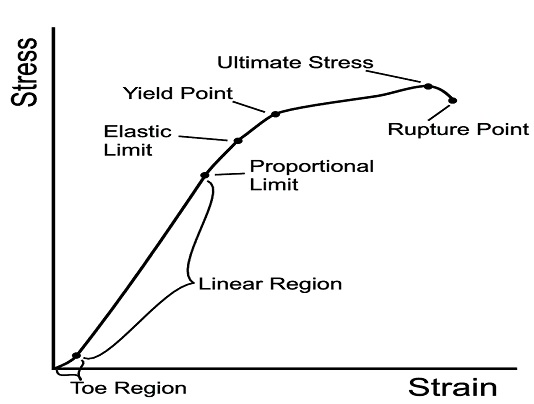In this blog post, you will get an idea of Stress vs Strain And Hooke’s Law.
Table of Contents
Introduction –
Before we start discussing Stress vs Strain And Hooke’s Law, it is very important for us to understand the nature of force. Whenever we apply a force on a body it can either be a tensile force or a compressive force. The tensile force stretches the body while compressive force compresses the body.
The force applied per unit area on the object is known as stress. It is denoted by sigma. The strain is defined as the ratio between the deformed dimension to the original dimension of an object. It is denoted by epsilon.
Stress VS Strain –
We already have discussed the basic definition of stress and strain. Now we are going to understand the main difference between these two.
Strain produced in a body is only due to the stress applied to it. So, we can say that strain is the product of stress. If stress is absent in a body, then there is no way strain will develop in that body.
While the strain is the result of stress. Stress itself is the result of either tensile force or compressive force. So, we can find two types of stress. The first one is tensile stress which is produced by tensile force and the second one is compressive stress which is produced by compressive force. Meanwhile, tensile stress produced, tensile strain and compressive stress produced compressive strain in an object.
The unit of stress in N/ m2, while a strain is a unitless quantity because it gives results in a relative form.
Stress = sigma ‘σ’ = F/A
Where,
‘σ’ = Stress on the body
F = Force applied on the body in Newton.
A = Area of the body on which force has been applied
Strain = ϵ = ΔL/L
Where,
ϵ = The strain produced in the body due to the stress
ΔL = Change in the length due to stress
L= Original length
Hooke’s Law –
According to Hooke’s Law, the strain produced in a body is directly proportional to the stress applied to that body within its elastic limit.
Hooke’s Law in the mathematical term can be written as-
F= – K.X
Where,
F = Force in Newton
K = Spring constant which is in N/M
X = Length which got extended due to force
The negative sign represents the spring force which always acts in the opposite direction of applied force.

Elastic limit –
Elastic limit represents the maximum value of stress that can be applied to a body without causing any permanent deformation. If you apply stress within the elastic limit of the object, then it will return to its original shape as soon as you remove the applied force. But if you apply stress more than its elastic limit then there will be permanent deformation in the object and the object will not be able to return to its original shape when will you remove the applied force.
Read my another article:
Stress-Strain Curve for Mild Steel Explained
